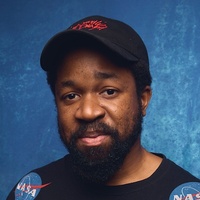On saying what you mean
Prelude
Willa Bennett is the Editor in Chief of Highsnobiety. She is the author of sold-out poetry collections i think there are goose eggs in my belly and this always happens. She was on Forbes 30 Under 30 after being the first woman to lead the social team and writing many viral culture pieces at GQ.
Conversation
On saying what you mean
Highsnobiety Editor in Chief and writer Willa Bennett on trusting the people around you, writing profiles with meaning, and not trying too hard.
As told to Madeline Howard, 1091 words.
Tags: Writing, Editing, Publishing, Process, Success, Focus, Inspiration, Multi-tasking, Time management, Collaboration.
You’re known for writing lovely, insightful profiles. What are the elements of a great profile story, no matter the subject?
It’s easy to write an average profile but hard and almost impossible to write a really good profile. But even though social media and the platforms that most celebrities have now have shifted the writer’s role in a piece of press, a good profile, especially one with authoritative writing and a clear point of view, will always reach the right, curious people.
I don’t think I’ve even written profiles that are amazing—in fact I’ve only written a few that I’m really, really proud of, but I aim to look at a subject within the context of youth culture. It’s also important to me that we meet one-on-one in an environment that’s secluded so that we can have a real conversation. I am vigilant about no reps being present.
As the Editor in Chief of Highsnobiety, what do you think makes for a successful and collaborative creative leader?
I’ve learned repeatedly throughout my career how vital it is to build and trust your team. It’s one skill to recruit and hire talented people—but knowing when and how to step away, challenge, support, and push back, especially creatively, is an entirely different craft. The art of leadership should be pursued with seriousness, purpose, and grace. Make no mistake that leading a team is different from being a creative person. I work really hard at both.
How do you differentiate your writing at work from your personal writing and poetry?
They’re inseparable. I take my professional pursuits incredibly personally, so I’ll work through the same thoughts in my fiction, non-fiction, editing, and writing. People always ask me if and when I will write another book, but I want to release my next body of work when it is ready. I have so much to say but I’m not in a rush to get it all out.
How do you define success and failure in your art? Aside from money, what are the rewards of your creative practice and your art?
It’s different for everyone. But I feel successful at Highsnobiety when I’ve guided the team to platform a unique perspective in style and fashion: Billie Eilish’s cover story, NewJeans limited edition print issue which sold out in three hours, stories about Central Cee, Emma D’Arcy, d4vd, Montell Fish, our new beauty vertical, editing so many gifted writers, hiring so many incredible creatives, working with so many young people. I feel so grateful to lead such a vibrant, diverse team who deeply care about fashion and culture.
In my writing, it’s like, “Did I say what I mean?” And is what I’ve written clear and additive to the conversation? With the way that the internet has changed writing, going viral doesn’t mean anything if you didn’t actually say anything. There’s been a couple of articles in my life that have reached vast amounts of people, but I’m not proud of them for that reason. I’m proud that I managed to clearly and cohesively focus on an idea and present it to readers.
You have also self-published two works of poetry. What role does poetry play in your creative practice?
I’ve been writing my whole life—I can’t go a week without journaling. It’s how I process the world around me. I donated all [of the proceeds] from the first collection to The Audre Lorde Project and everything from [the second collection] to The Center. The poetry felt personal to me, and I wanted to keep that feeling and not conflate it with how many people read or didn’t read it. I just wanted it to be about the work, and I was really proud of staying true to that. Because, in some ways, it is easier to go through a publishing house. I did all of the promotion myself. I posted about it on TikTok and Instagram and threw a party with all of my friends, and I was able to sell all the copies in three hours.
Can you walk me through a day in your life when it comes to your creative practice?
I write in the mornings with my first cup of coffee. Then, I am in the office, likely Zooming with our HQ in Berlin, by seven or eight. We have a global editorial stand-up meeting at 9:30 every morning. Then, the afternoon consists of meetings with varying stakeholders, brands, or teammates until it’s seven or eight, and I’m off to a dinner or an event. I’m vigilant about getting six hours of sleep, but my next goal is to cook more.
You’re also known for your style, which often features menswear and an affinity for ties. What role does fashion play in your self-expression as an artist?
I love having a uniform. It adds structure to my life, and I find comfort in it.
What is your current relationship to social media when it comes to your work?
It’s hard to look at any piece of art right now and not think of it through the lens of social media. It’s such a part of the way young people communicate and digest information. I encourage everyone on my team to understand the platforms and how they may or may not inform our lives—like, reading about the algorithms, the media, the biases that are permeating pop culture, varying business models, and understanding all the emerging platforms. Don’t belittle the impact of all of this.
How do you know when a project is done?
You just have to call it eventually. [For example,] technically speaking, yes, our September Issue is done. It has shipped. But do I feel finished with it? Never. We were ambitious with this issue—we decided we couldn’t platform just one, “face of fashion” and instead went with three exciting covers who each have added something unique to the conversation about style. Having one solid image for a magazine cover is one thing, but it’s another to say something through three rich stories. It was an exciting challenge, and I give my incredible team a lot of credit for their dedication and endless hours. I can’t wait for you to see it.
What’s something you wish someone told you when you started making art?
Don’t try so hard.
Willa Bennett Recommends:
Long Walks
Lone Phone Calls
Long Love Letters
Long iPhone Notes
Long Cashmere Underwear
- Name
- Willa Bennett
- Vocation
- writer, Editor in Chief
Some Things
Pagination



